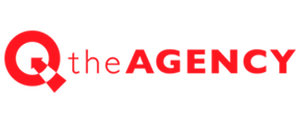03 May SEO 101
We hear it all the time – “I want to be #1 on Google!” Or “I’m not getting enough web traffic!” These are lofty (and achievable) goals, but neither are a simple fix. We often encounter the misperception that everything in the web world is easy, fast and cost-effective, when in reality to have a successful online image and continued growth it’s quite the opposite.
Having a website is important and a great tool to project your thoughts, services and products to the world. However, you cannot expect that millions of people are going to instantly start reading your blog, buying your products or knocking on your door to use your services just because you now have a great new website.
As the old cliche goes, Rome was not built in a day. The same concept can be applied to your online image. Companies like Coke, Nike, and Amazon have spent billions of dollars on advertising, marketing and creative strategies. This is why they are the big and very profitable players in their industries. You can’t expect to be the next Mashable, Facebook or Zappos overnight. Building an online business and image takes time.
Once you’re website is launched there are a few important steps to take to ensure it does not sit idle collecting internet dust!
1. Your website should contain standard Search Engine Optimization features and solutions. These items are a must and we make it a point to make sure all our websites contain these items for organic search results:
Include a meta-description and meta-keywords within your site. A meta-description is a short sentence or two explaining your website or business in the most direct way. For example: “Gatorade is a premium sports drink to help individuals increase performance and quench thirst!” Meta-keywords are words that you think people may use to find your website. For instance, if you were searching for sports drinks, and want Gatorade to be displayed in those results you would probably include terms likes: sports drink, performance drink, thirst quencher, energy drink, etc. These are basic features that should be in place before the launch of your website to help search engines like Google, Bing, and Yahoo discover your website. Keep in mind that these can be changed regularly if needed.
Have clean URL’s. Your Uniform Resource Locator (URL) is your domain name with whatever wording, numbers or combination of the two that follows it. You’ve seen some websites with sub-page URL’s that look like this: www.sportsdrink.com/&?=facts&page=5nvm=12%3=6. Search engines generally don’t like this type of unrecognizable data. A clean URL would be one that is short, to the point, and matches the page’s theme. An example would be something to the effect of this: www.sportsdrink.com/nutritionfacts. Almost any user looking at that URL could reason that this page is devoted to the drink nutrition facts. Search engines like them for the same reason.
Install and maintain some type of analytics or statistics to track on your website. Ever wonder how many people visit your website, where they come from, what pages they read the most and how long they stay on your site? These type of tracking programs can help provide very useful and valuable data for your online strategies. The most useful and effective of these programs is Google Analytics. The amount of data collection, reporting and statistics it provides is currently unmatched. And the best part is that it’s free! Anyone with a Google account can set it up, though we highly suggest having a web professional do it if you’re not familiar with the installation process.
Take note on the images and content on your website. Web designers are talented and love creating creative and artistic images, but if your website is full of images and lacks actual text, search engines will overlook those valuable pieces of content. The best web agencies will work with developers to establish the best method for making your webpage creative yet searchable. Images are not bad, but there must be a balance.
Make sure that the images on your website are installed with ALT tags. An ALT tag is designed to allow users who have their images turned off or cannot visually see images to still understand what is on the webpage. You can recognize if an image has one by hovering over it – you will see a little window appear explaining what the image is.
Include H1 tags, as well as other title tags if necessary. H1 tags are used to define the HTML headings on your website.
-
-
- TITLE OF THE PAGE on the webpage would be your H1 tag. Your tag should say what your webpage is about.
- You only want one H1 tag on a webpage.
- CONTENT. CONTENT. CONTENT.
- SUB-TITLE- (This would be an H3 tag)
- Sub-content, sub-content, sub-content
- SUB-SUB-TITLE (This would be an H6 tag)
-
2. Promote your website. Just having a website with basic SEO features in place is great, but any more it’s not enough. Before your website is launched, as well as after, you need to market and advertise your presence. using both online and off-line tools. Several ways to promote your website include:
- Announce it on social media channels like Twitter, Facebook, LinkedIn, Digg, & YouTube.
- Create a blog, updated with fresh and new content that’s great for SEO ranking.
- Send out direct mail pieces, create promotional signage, and put your URL on everything!
- Send email blasts to current customers as well as prospects, letting them know you have a new site.
3. Find a good SEO firm and discuss with them pay-per-click advertising, Google AdWords, Search Engine Submission, and evaluation. These tactics and others like them help increase those basic SEO features while creating an online advertising arsenal. A trained Google Adwords specialist can increase your online traffic, your online leads, and your online profits significantly.
4. As mentioned in #2 use Social Media. Posting via Facebook, creating new tweets on Twitter and generating likes, followers and fans is a great way to offer discounts, advertise events, and promote your website and business. These are free tools to use for your business. However, make sure you know how to use these mediums effectively. We suggest consulting a trained social media specialist on the best practices for social media implementation.
Good luck! And as always, if you have any questions about building a website, SEO, or anything else, we’re happy to help. Contact us today and we’ll get you started with a free marketing evaluation.




